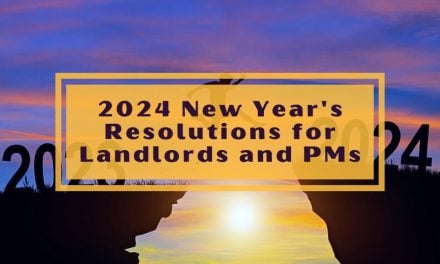 While Senior housing is not a new concept, it is becoming an important topic in the housing industry because of the growing senior population. The San Francisco Chronicle reported that roughly 1 in 7 Americans is over the age of 65 and as 10,000 people turn 65 every day, that number will be 1 in 5 by 2030.
While Senior housing is not a new concept, it is becoming an important topic in the housing industry because of the growing senior population. The San Francisco Chronicle reported that roughly 1 in 7 Americans is over the age of 65 and as 10,000 people turn 65 every day, that number will be 1 in 5 by 2030.
With the rental market tightening, you may find yourself noticing more rental advertisements promoting “55+ Housing Communities”. This type of age restricted rental listing, intended for senior housing communities, is one of the few circumstances of conditional living allowed by the Federal Fair Housing Act.
Senior housing communities alleviate the stress of home maintenance, provide social amenities, offer convenient transportation options, and foster an environment of companionship for residents. Housing providers can offer different types of living options to residents of a certain age with these types of senior housing options.
Senior housing communities are classified by the Department of Housing and Urban Development (HUD) as communities that :
- All occupants are 62 or older… or…
- 80 percent of the units have at least one tenant that is older than 55 … or…
- HUD established the housing development as a senior housing community under some federal, state, or local government program.
Senior housing that meets the criteria above differentiate from personal care facilities and assisted living communities in that specialty care is not necessarily provided to the residents.
A Brief History of Senior Housing
The Fair Housing Act of 1968 made it illegal for communities/landlords to discriminate against potential occupants based on protected classes. The FHA was amended in 1988 to include protection for those with disabilities and the prevention of discrimination based on familial status.
However, in 1995 the Department of Housing and Urban Development (HUD) passed the Housing for Older Persons Act (HOPA) in order to preserve communities designed for seniors.
The HOPA established guidelines to clarify what qualified for senior housing including:
- Housing must be occupied by at least one person 55 years or older per unit
- Eliminated the requirement that housing for older persons have significant services and facilities specifically designed for its elderly residents.
- Required that facilities or communities claiming the exemption establish age verification procedures.
- Established a good faith reliance defense or exemption against monetary damages for persons who illegally act in good faith to exclude children based on a legitimate belief that the housing facility or community was entitled to the exemption
Types of Senior Housing
Independent Living – Residents live independently and most communities offer amenities, activities, and services. Often, recreational centers or clubhouses are available on site to give seniors the opportunity to connect with peers and participate in community activities. Since independent living facilities are aimed at older adults who need little or no assistance with activities of daily living, most do not offer medical care or nursing staff.
Low-income or subsidized senior housing – These senior housing complexes are subsidized by the U.S. Department of Housing and Urban Development (HUD) for low-income seniors.
Senior apartments – These are apartment complexes restricted by age, usually 55 and older. Rent may include community services such as recreational programs, transportation services, and meals served in a communal dining room.
Personal Care Home – Designed for senior who need assistance beyond basic necessities but do not yet need long-term hospitalization. For a senior with special needs, qualifying for a personal care home can make a huge difference in his quality of life and financial security, as personal care homes are more expensive than traditional rentals due to the additional services provided.
The main difference between independent living and other senior housing options is the level of assistance offered for daily living activities. If one needs help with eating, dressing, and using the toilet, or requires regular medical assistance, other housing options such as assisted living facilities or nursing homes may be a better fit.
Senior Housing and The Federal Fair Housing Act
Housing providers are required to adhere to strict guidelines established by the Fair Housing Act (FHA), and enforced by the Department of Housing and Urban Development (HUD). The Fair Housing Act sets specific rules about providing equal opportunity housing to all rental applicants and expressly forbids discrimination based on a protected class, like race, gender, familial status, or sexual orientation.
According to the 2014 Fair Housing Trends report, “rental discrimination far outweighs all other types of housing discrimination reported in the United states.” While discrimination against these protected classes is illegal in most circumstances, housing that meets HUD’s definition of senior housing can legally exclude families with children. An elderly person who qualifies for housing may be denied senior housing if family members who are not senior citizens are part of her household.
If you are a landlord or real estate investor who wants to establish a senior housing community, Nolo provides an outline for Senior Housing Basics on how to meet the requirements.
Have any experience living in, managing or owning a senior housing community? Let us know about it in the comments!







My wife and I retired a few years ago from our Commercial Plumbing business we ran for 37 years. Having been Landlords for nearly 3 decades we were not rookies at the game, so when we decided to build a 55 plus community called the Fourth Quarter- it fit well into our skill sets. Its been the best hassle free rental situation we have ever experienced. Of course it helps when the units are new and we own them free and clear so we can wait for for the right fit as far as tenants go. Most of our tenants have been home owners before and we make sure that they have at least 3 or 4 times the rent in income which has made life much easier than renting to the general public. In the three years that we have had this complex, we have not had one tenant pay late. Of course thats one thing I stress at first with no hesitation. ( there is no allowance for late payment in our contract. ) (PERIOD). Dealing with retired or semi retired life managing adults makes all the difference in the world. We built a home on site and manage the units ourselves and are here in case there is a issue to deal with, and even with new units- there is always something going on. It gives us a wonderful passive income and the facility has appraised well to boot- so its been a win- win. I am very handy which helps, and my wife runs the books like a swiss watch. I set a solid reputation with my tenants that I have my life savings tied up in this complex and that I guard it with a passion. I am firm- but fair. Our village is next to a brand new city park with a wonderful dog path going around it. We find that most of our Seniors have a dog and love that feature. For that reason , we did not put carpet in any of the units. They have synthetic wood flooring- granite countertops- tiled laundry rooms and baths. 3 bedrooms- 2 baths- approximately 1350 sq ft. 2 car garage and these units are one story-duplex units. We included wide hallways- ADA wc’s- ect. We do not advertise as ADA accessible but basically are. There is one 4 ” step up onto the front door. Fully fenced and lockable gated backyards. We provide Landscape Maint- and have put shelving in the garage on both sides for storage. The tenants love the spacious walk in closets we have provided in the Master Bedroom.Vaulted ceilings in the great room and master bedroom with ceiling fans make a wonderful amenity. We built a extra large 12″ wall between the units and had sound wall panels built into the structure. Cement sidewalks go completely around each unit to keep the foundation wall clean and insect free. We put a lot of planning into this complex and so far it has paid off wonderfully. Thank you for allowing me to share this new adventure with you.